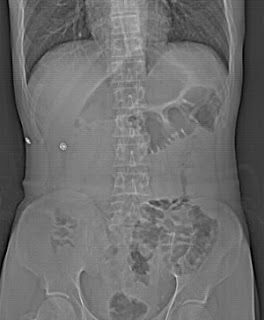Yesterday, while dozing off to a boring comedy movie in Ali Mall, I was suddenly awakened by a loud burst of laughter coming from a group of viewers behind my chair. I found out that these laughing people were not Pinoys at all, but Koreans. They were really enjoying the movie. It was curious though that they were the only ones laughing, while the rest of the viewers maintained their silence.
I have long noticed the swelling numbers of Korean tourists in our country. They are all over the Philippines, in the parks, beaches, resorts, hotels, and everywhere. Now, the Koreans are starting to invade the malls.
If you had been to Luneta or Intramuros lately, you would notice several identical tourist buses parked in the side streets, all rented by Koreans. Most of them were all in walking shorts, white shirts and caps, and everyone carries a digicam. They take pictures of everything, as in everything. In my observation, they do not mingle with the locals, only limiting their contacts with their Filipino tourist guide.
One late afternoon sometime in January this year, I decided to go to Manila Bay breakwater, where I can ride in one of those for-rent passenger boats for 50 pesos, and experience Manila Bay sunset at the sea. I climbed inside the boat and waited several minutes for other passengers to fill in the vacant seats. Three or more Pinoy couples entered the boat. Suddenly, we were informed by the boat owner that we had to vacate the boat as it had suddenly been rented "wholesale" by Korean tourists. I complained that I can also pay the 50 pesos fare, and that I didn't mind riding with the Koreans. The boat owner told me that the boat would be "exclusively" for Koreans only. Okay, so the Koreans didn't want Pinoys aboard. Alright then. Let them have the boat. I can just enjoy my sunset sitting in one of the benches.
Another incident that involved me and Korean tourists happened last July, 2007. I was in Intramuros to buy some books at the Ilustrado Bookshop. Upon entering the shop, the Filipino guard at the door asked some me to inspect my bag. I thought it was s.o.p. so I showed him the contents of my bag, no problem. After the guard thoroughly inspected my bag, three Korean tourists (I tell you, they're everywhere) entered the shop. The guard immediately greeted them in a warm manner (not accorded to me), and let them inside the shop without inspecting their huge bags. I was furious at this discrimination and reprimanded the guard for his toady behavior in front of foreigners. He got my point and apologized. The Koreans looked bewildered.
As Filipinos, we should stand on equal footing with foreigners, especially in our own country. Subservient behavior in front of foreigners does not help in the prestige of our image as Filipinos. Otherwise, foreigners would think we are only after their money. It is good to be hospitable but we should always remember to maintain dignity and self-respect.
The Growing Population of Koreans in the PhilippinesAccording to the latest stats, the number of Korean tourists in the Philippines ballooned from 378,602 in 2003, to 572,133 in 2006, a 51-percent rise.(Source: "Koreans "invade" the Philippines, Philippine Daily Inquirer 6/17/2007)
The figures may have certainly grown by now, as the Philippine government allows, even encourages, foreigners to come to our country. Their visits earn huge amounts of income for the government. But what will the effect be in the long run?
There is a variety of reasons why Koreans favored the Philippines over other Asian destinations. The Philippines' lax in immigration requirements, the low cost of travel and expenses in the Philippines, hospital tourism, and the low cost of education.
Many of the Koreans who were granted alien certificate of residence in the Philippines already acquired vast amount of real properties. Everywhere in the country, they have already made their presence felt, establishing exclusive schools for Koreans, resorts, restaurants, hotels, and even hospitals for Koreans.
What's surprising is that foreigners are not supposed to own real properties in the Philippines. If they do, they are only entitled to be a minor owner only--meaning there should be a major Filipino co-owner.
Recently, some concerned Filipinos exposed that a wealthy Korean company bought a large tract of land in Taal, Batangas. The land was planned to be used as a resort spa. It was found that the Mayor of Talisay issued the memorandum of agreement for the purchase, even though it is clear that resort spas within the outskirts of the Taal volcano are not allowed to be built.(source:William Prilles Jr."The Furor on the Taal Spa" @http//www.planet.naga.gov)
In Baguio City, residents were alarmed at the growing rate of Korean residents in the city. According to residents, the common greeting nowadays is "Anyung Ha Seyo"--Good morning in Korean. Angela Malicdem of
Bulatlat.com reports that,
"In Baguio, the influx of Korean nationals has caught some attention. Baguio now is host to almost 10,000 Koreans. At first, only teenagers came here, to study the English language. Most of them stayed for two months during their vacation from school in Korea. Then they started to study full-time in Baguio universities. Before long the Koreans started coming to Baguio with their whole families. "
Now, I don't have anything against Korean tourists, the Korean people or the Korean nation. I am no xenophobic, and in fact I admire the Koreans and how they have managed to deal with the difficult separation of their country and still maintain their unique culture. However, it causes me some alarm that now, there is definitely an ongoing silent invasion of Koreans in the Philippines. And many of these Koreans are not tourists anymore. Many have already started to settle permanently.











